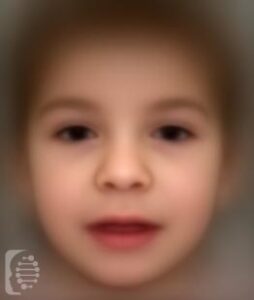Overview
Coffin-Siris syndrome, also known as CSS or 5th digit syndrome, is characterized by coarse facial features and the 5th finger or toe’s underdevelopment. Symptoms may vary between individuals presenting with the syndrome.
Health conditions associated with this syndrome may include abnormalities affecting the eyes, brain, heart, and kidneys.
Syndrome Synonyms:
CSS; Fifth Digit syndrome; Mental Retardation, Autosomal Dominant types 12, 14, 15, or 16 (depending on the affected gene); Hypertrichosis, Hyperkeratosis, Mental Retardation, and Distinctive Facial Features, HHID;
What gene change causes Coffin-Siris syndrome?
Coffin-Siris syndrome occurs due to mutations in the following genes: ARID1A, ARID1B, SMARCA4, SMARCB1, DPF2, SMARCE1, ARID2, SMARCC2, SMARCD1, BICRA. It is inherited in an autosomal dominant pattern.
In the case of autosomal dominant inheritance, just one parent is the carrier of the gene mutation, and they have a 50% chance of passing it onto each of their children. Syndromes inherited in an autosomal dominant inheritance are caused by just one copy of the gene mutation.
What are the main symptoms of Coffin-Siris syndrome?
Coffin-Siris syndrome’s main symptoms include what are often described as coarse facial characteristics – a wide mouth and nose, thick lips, flat nasal bridge, and short stature. The syndrome is characterized by excessive hair growth on the face and body but, at the same time, sparse hair growth on the scalp.
An underdeveloped 5th digit on the hand or foot is the main symptom. Other symptoms may include low muscle tone, short stature, respiratory infections, and failure to thrive in infancy.
Developmental delay and intellectual disability are common, and delays in speech and motor skills are common.
How is it diagnosed?
To find out if someone has a diagnosis of Coffin-Siris syndrome, it is important to have a consultation and evaluation with a clinical genetic specialist. Specialists may also suggest specific genetic testing or other types of tests to help reach a diagnosis. FDNA’s AI technology can help speed up the diagnostic process by analyzing facial features and other health information.


